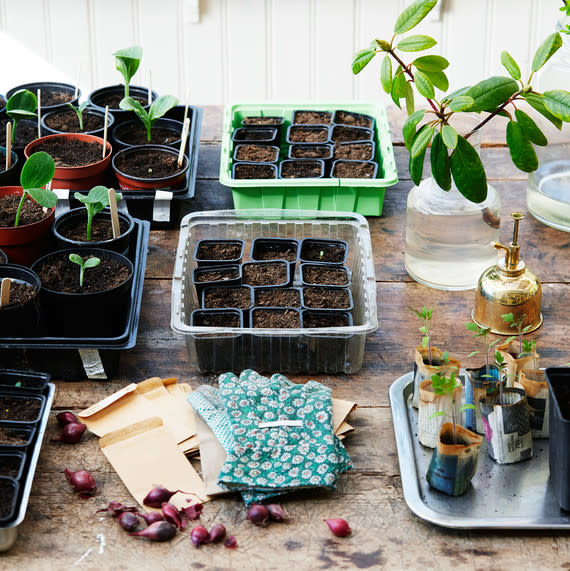These Are the Late-Summer Herb and Vegetable Seedlings You Can Plant in Your Garden Right Now

Have you been wondering if it's too late to plant more vegetable and herb seedlings in your garden? The answer really depends on your USDA plant hardiness zone and how long your growing season is. First, research your area's average frost dates—you can easily find this online by entering your zip code. Once you understand your typical first and last frost dates, you can plan your planting schedule and squeeze in another round of produce for a tasty, nutritious crop that'll last you through the fall. As an added bonus, the summer sun will do the hard work of keeping the ground warm for quicker germination, and late season planting encounters less competition from weeds and pests. You'll even find that many crops will hold steady through the approaching cooler months without turning bitter or bolting as they would in summer's heat.
To get started, check your seed packets and learn how deep to plant your seeds. Some of the smaller ones can easily be sprinkled on the soil surface while larger ones will need to be buried. You should aim to sow your seeds in an area out of the blazing sun but where sprouts can still get plenty of light. Also, be sure to plant in well-prepared, moist soil and try to do your planting in the evening so they benefit from cooler temperatures and experience less shock. If daytime temperatures are still scorching, create a shelter with a shade cloth or row covers so the seedlings can adjust to the sun and heat. Remember to watch your soil closely and keep everything moist—but not soggy!—with a mister or watering can. Tender, young plants tend to dry out faster. You can also feed the seedlings regularly with an organic liquid fertilizer mixed at the rate recommended by the product.
If you're the fastidious type, try keeping a gardening journal and record your seed starting dates and results so that every year you can reference your notes and make adjustments to the planting schedule and the variety of crop grown. With a little know-how, mid to late summer can be an ideal time to get in another seed planting round. This general planting breakdown by zone will help you get started.
Related: Understanding Your Plant Hardiness Zone
Zones 2 and 3
Try planting a fresh round of vegetables like spinach, kale, arugula, and radishes. If you're looking to add more herbs to the garden, parsley and cilantro would be good choices. Root vegetables, such as carrots and beets, can also be sown midsummer because they can stand up to a little frost and actually live through the snowpack and come out sweeter tasting for it.
Zones 4 and 5
No herbs here! Your best bet is to plant a fresh batch of turnips, beets, radishes, and carrots.
Zones 6 and 7
Salad lovers, rejoice! Now is the time to plant all the fixings for your next green meal. Try arugula, lettuce, radishes, and kale. You can also plant herbs like cilantro, dill, garlic, chives, and parsley.
Zones 8, 9, and 10
There's plenty of planting time left if you live in these three zones. Start vegetable seedlings like beans, peas, broccoli, lettuces, stir-fry greens, root vegetables, onion, squash, and arugula. You can also plant more herbs, including chives and cilantro.
Zones 11, 12, and 13
If you're living in any of these three zones, you're in luck! These warm-weather areas can grow just about anything at this time of year. The tropical temperatures and sufficient moisture mean it's not too late to try your hand at any vegetables or herbs you'd like.
